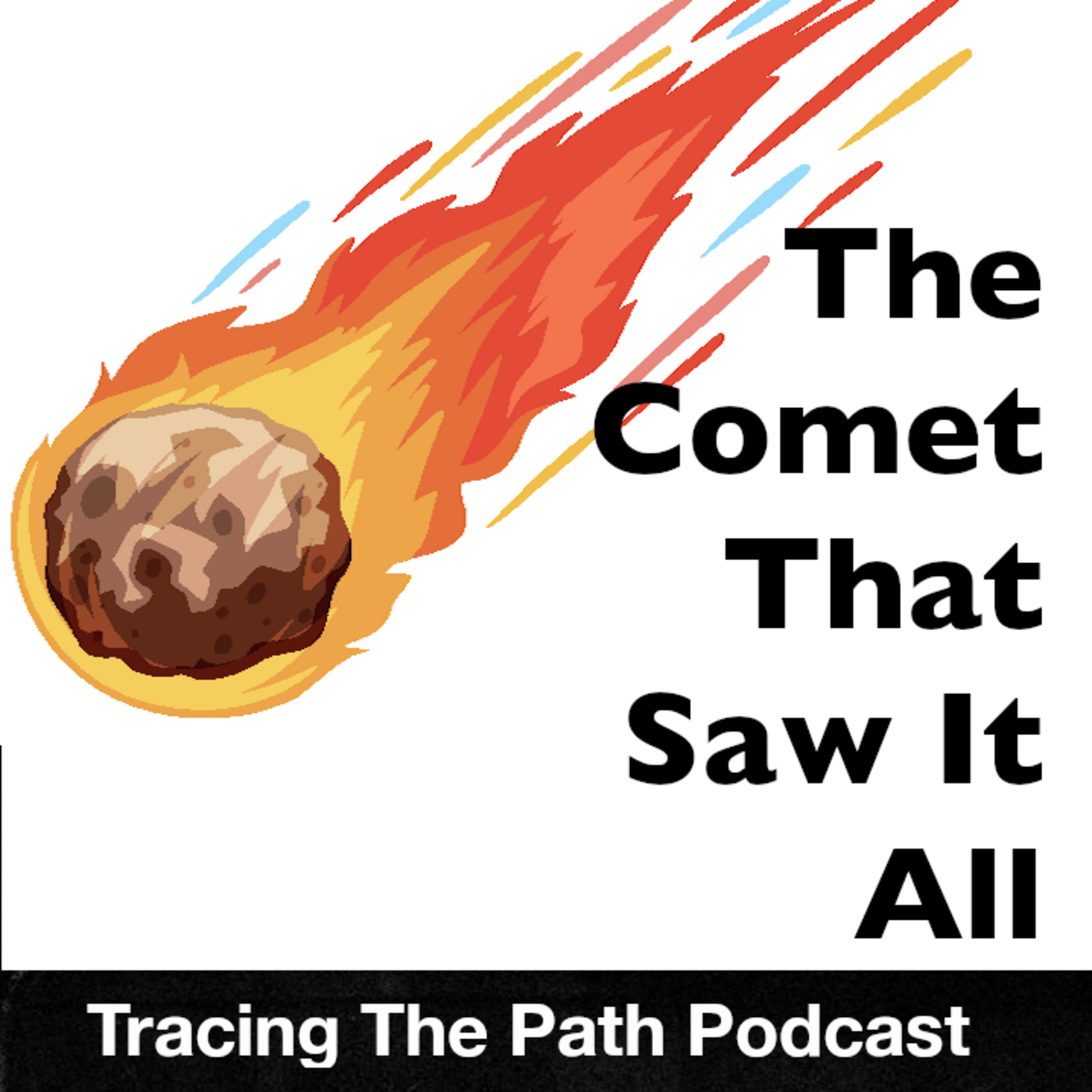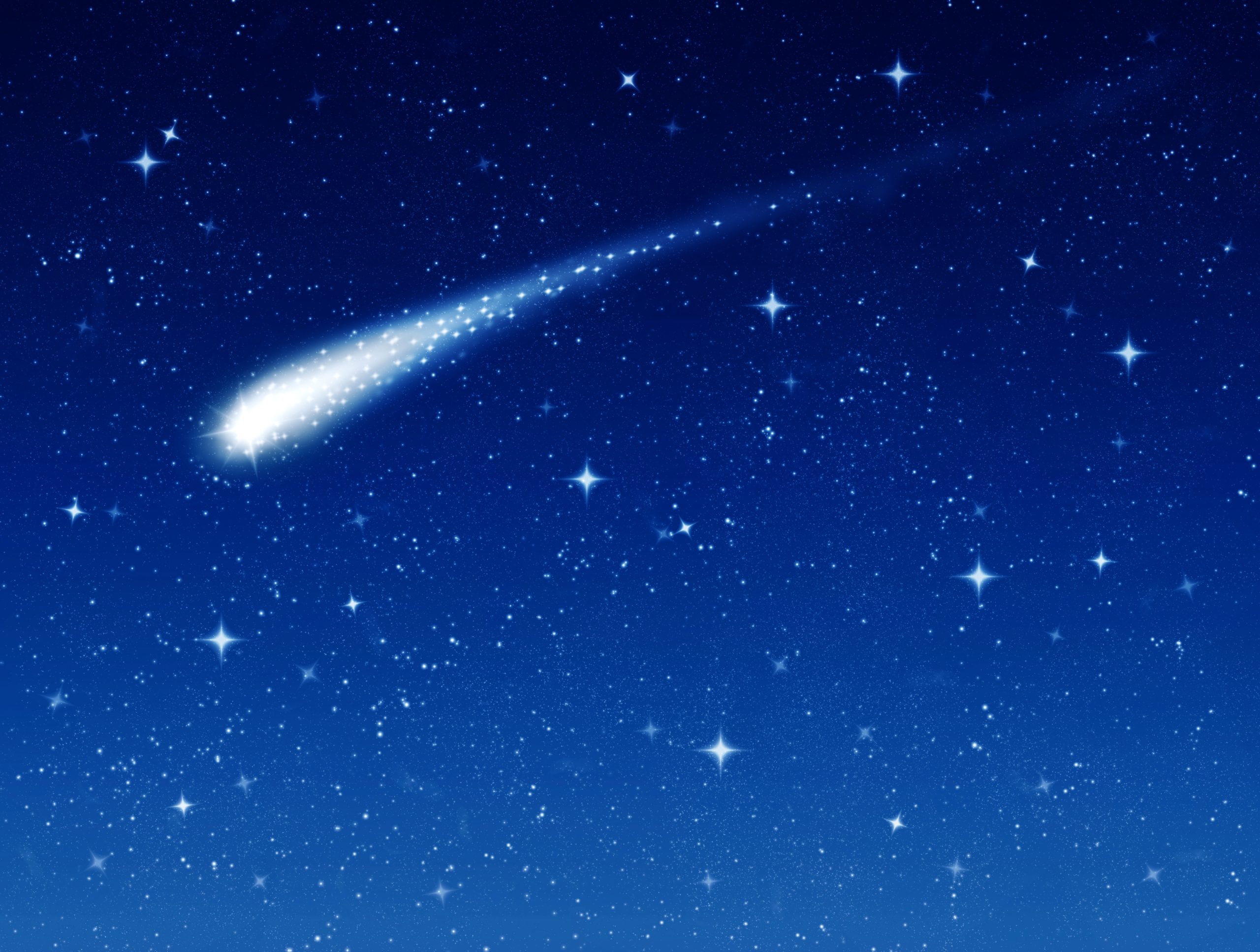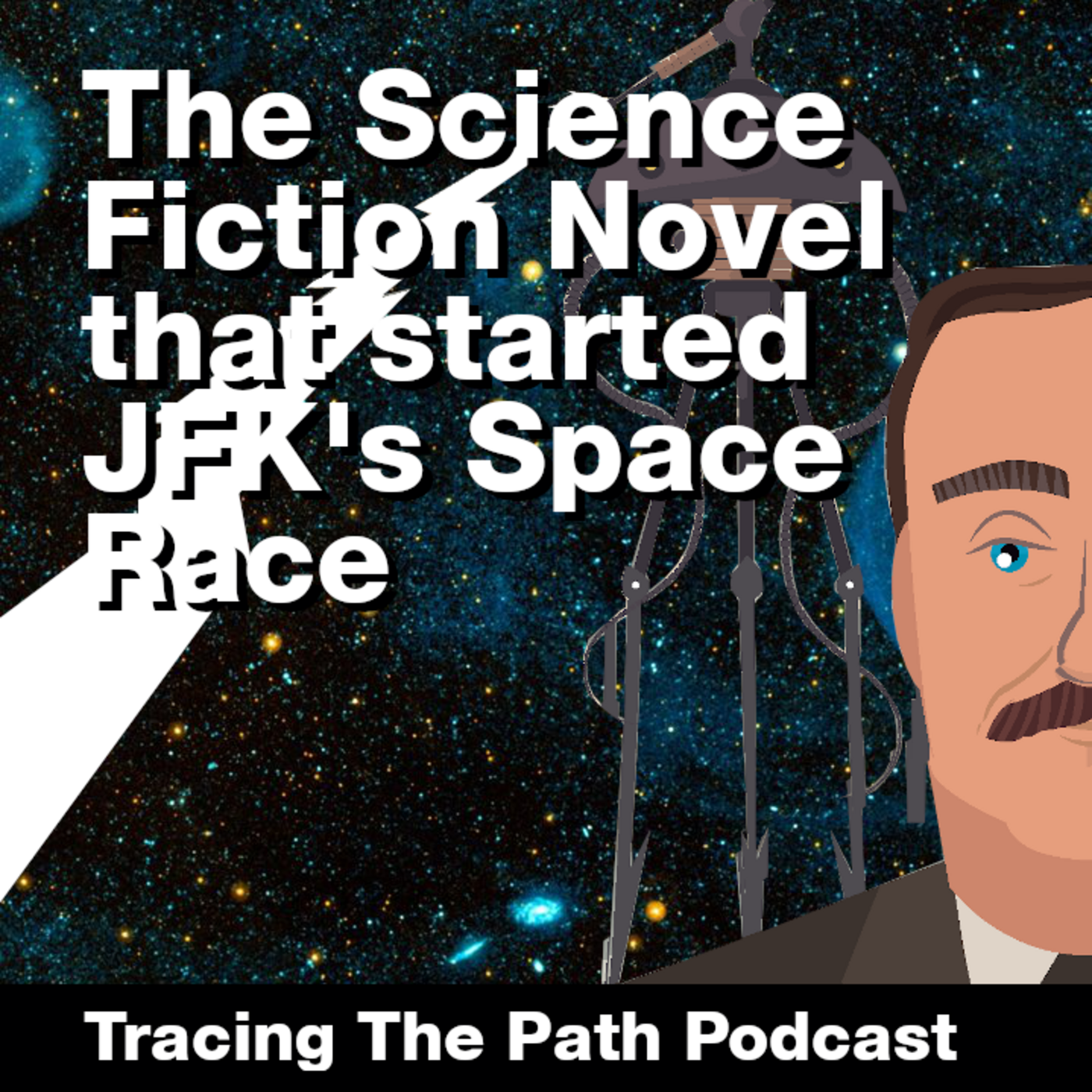TRACING THE PATH PODCAST

The Comet That Saw it All
This episode traces the historical and cultural impact of comets, particularly Halley’s Comet, from ancient times to modern scientific exploration. It highlights how various civilizations interpreted cometary appearances as omens or significant historical markers, influencing events from battles to the rise and fall of empires.
The narrative then shifts to the dawn of telescopic astronomy, emphasizing figures like Galileo and Newton who revolutionized our understanding of celestial mechanics. Finally, it explores the modern scientific pursuit of comets, culminating in the ambitious, though ultimately tragic, efforts to study Halley’s Comet in the 1980s, revealing how scientific curiosity continues to shape humanity’s interaction with the cosmos.

Audio Hour:
If you run an activity group, classroom or “audio book club”, click here for more information on using Tracing The Path.
Throughout the episodes, every tune is somehow related to the topic. In the Twinkies episode, for instance, the discussion of the Brooklyn Tip-Tops Baseball team concludes with “Take Me Out To the Ballgame”.
How many do you recognize? And harder, how many can you name?

The Comet That Saw it All
Imagine having been a fly on the wall when Genghis Khan was directing his army, or when Attila the Hun was attacking, or on the last day of Mark Twain’s life. Imagine seeing the Babylonians who are being present for the Duke of Normandy invasion at the Battle of Hastings. No person could possibly have seen all this. But something did.
Every culture since the beginning of time has had a fascination with the skies, with what was happening in the heavens. The Laplanders of Finland have stories about the northern lights. The ancient Egyptians have stories about the Sun, and even farmers take note of the phases of the Moon.
For today’s story, we are looking at comets and are thankful that ancient civilizations made such great records of their arrival. Liu An, a Chinese historian during the Han dynasty, wrote about the campaign of King Wu against the tyrant Chu and how the sighting of a great comet foretold King Wu’s victory.
In 87 BC, the Armenians placed a comet on a coin, commemorating King Tigraines II, as a comet appeared during his rule. In 451, the observation of a comet was thought to predict the defeat of Attila the Hun. Ancient ice from the Arctic showed a layer of dust, thought to be from a comet around 536. Scientists postulate that dust would have been thick enough to change the global climate, and could have been the reason for the Justinian plague and the Black Death.
In the year 1066, Duke William of Normandy thought the sighting of a comet was the sign he needed to invade England at the Battle of Hastings. The Bayou Tapestry, featuring the comet, was made in honour of the victory.
In 1222, a comet was seen by Genghis Khan as an omen to move west and grow the empire.
And finally, in 1301 and Italian painter Giotto di Bondone, shook up the art and religious worlds by painting the biblical Nativity scene on the walls of the Scrovegni Chapel in Padua, Italy. In place of the north star, the star the wise men were said to have followed, he painted a great comet instead, making it the first time a comet was an indication of good.
Which brings us to the first hero of our story, though Though this time, the hero is not a person., but a telescope.
WHAT DID HALLEY SEE?
Somewhere between 1590 and 1608, the telescope was devised and invented, but its original designer will forever remain a mystery. What is known is that Hans Lippershey submitted the first patent for a telescope design in 1608. Fortuitously, he left the object nameless, and the government agreed it was too simple to patent.
While in nearby Venice, Galileo Galilei got word of such a device, shared to him as a Dutch spyglass. It intrigued him and when he returned home, and took only a day to improve it. Over the next year, he would further enhance it achieving progressively better and better magnifications, up to 32X.
At which time, he pointed the telescope up to the heavens. And it isn’t hard to understand Galileo’s desire to point the telescope to the skies. He grew up in Padua Italy as well, where Giotto di Bodone painted the Nativity.
Galileo’s observations with the telescope changed the world’s relationship without her space. For instance, he was the first to show the craters and mountains on the moon. He was able to see and draw the phases of the moon, and he identified the moons of Jupiter. And through the phases of Venus, he was able to prove Copernicus’s theory that the planets rotated around the Sun.
In addition to Galileo, the brightest minds of the time were interested in the telescope, and were all working on improving it. Johannes Kepler, clockmaker Christian Huygens, and even Isaac Newton.
Newton believed the telescope was flawed and could be better. After seeing how a prism separated light into colors, he knew the telescope would suffer the same fate since it also used lenses. This observation became the first of its kind. Newton-proven color comes from light.
So he made a telescope with mirrors instead of lenses and created the first 38x magnification telescope. Joanna’s Kepler was eager to use any telescope and used one to create his own set of laws that defined planetary movement. Newton read Kepler’s laws and went to work adding in his gravitational theories.
A friend of his was also curious about the relationship of gravity to Kepler’s laws. His name was Edmund Halley. Halley took his questions to Newton, but was surprised to learn Newton had already solved them.
Thinking through Newton’s response, how he recognized Newton’s calculations would change the world, and so he paid with his own money to publish Newton’s thoughts. The book was titled “Philosophiæ Naturalis Principia Mathematica” which is now considered one of the most important works in science, as it explained Newton’s laws of motion, as well as his Law of Universal Gravitation.
Because Newton’s book proved Kepler’s wrong. It was not possible for comets to fly straight, if they were moved by the gravity of things like Earth and the Sun. So he went and recalculated the orbits of 28 comets, grateful that historians before him took such detailed notes, and he was excited to see that the 1456-1531 and 1607 comets had almost the exact same fight path. And so it occurred to Halley that they must be one in the same, with the same 75-year orbit.
And from that, he predicted another comet would arrive in 1758, 54 years later. Sadly, Halley didn’t live that long. He died in 1742. But on Christmas Day 1758, the great comet returned, making the scientific world shout with excitement.
People, mere mortals with pencils, could calculate and predict future scientific events. Never had that proof been so real, and in his honor, the world renamed the 1758 Comet, Halley’s Comet.
Looking back over ancient history, Halley’s Comet was calculated to have seen the Babylonians, the Huns, Genghis Khan, King Kamenemaya of Hawaii, and more.
Scientists suggested it could even be 200,000 years old, while it has always been depicted as a fiery ball with an extremely long tail. It’s really just a large rock, hurtling through space, caught in an orbit. Unknown to most people, the tail only forms when the comet is near the sun, with the heat of the sun superboiling some of the elements in the comet, forming the trail.
What also isn’t common knowledge is the pale itself does not act like a cape, going behind it as it moves forward. Instead, it is the rays of the sun that create the tail, and as such the tail is always facing away from the sun, and so it could in fact appear to be flying sideways.
The arrival of Halley’s comet in 1835 was a cultural phenomenon it had never been prior. Perhaps it is because Mark Twain was born on that day. But whatever the reason Halley’s comet became part of our cultural literature.
Prior to 1835, a work of Shakespeare might be the only cultural reference to a comet. However, in 1839 Edgar Allan Poe decided to make the comet a focus of his work. He had grown up with a telescope and had been present in 1832, when scientists thought a comet was on a collision course with the Earth.
So in 1839, Poe published “Eiros and Charmion,” a short story about Cleopatra’s attendance. In it, they are in the afterlife, when Eiros was explaining to Charmion that the world had experienced an apocalypse after a comet collision.
And in then 1869, Hans Christian Anderson wrote a poem about a young boy who was thinking about how long he must live to see the comet come back again.
In 1877, Jules Verne published a book about a chunk of earth that was dislodged after a comet grazed the earth, and the 36 people on the chunk of earth had to devise a way to get back.
And finally in 1906, H.G. Wells published in the Days of the Comet. Wells told the story of a comet that passed too closely to Earth, with the atmospheric gases of the comet enveloping the Earth and making it better.
The French astronomer, Camille Fulmerian, used a spectrometer to measure the elements in the tail of the comet and came to the conclusion that the tail contained cyanide gas and could snuff out the world when Earth passed through the comet’s tail. Even though other scientists suggested there was virtually no threat of this, the panic of 1910 ensued.
To make it worse, a correspondent for London’s Royal Observatory suggested the pull of the comet’s gravity would dump the Pacific Ocean into the Atlantic. If you can’t believe the Royal Observatory, who can you believe?
And as in every panic, the opportunists popped up immediately, selling anti-comic pills and anti-comic umbrellas.
Also leather gas masks saw their first major rise in sales. But most importantly, the sales of telescopes skyrocketed. But the comet of 1910 came and went and no one died. Well, not exactly. Like Attila the Hun and Gegas Khan before, Halley’s Comet of 1910 proved once again to be tied to the fate of great leaders.
While Halley’s Comet was passing overhead, England’s King Edward VII died. And the next day, as he himself predicted, Mark Twain, who was born in the comets’ arrival, in 1835. And then Mark Twain died upon its return in 1910.
Lee Pongai, Korea’s vice minister of home affairs, saw the comet as a sign the imperial dynasty of Korea was coming to an end. Unwilling to see his country’s demise, he fled to China. And then in August, Japan annexed the Korean Peninsula, ending their imperial dynasty.
Unbeknown to Lee Pongai, however, his new safe home in China would be subject to the Xinhai Revolution the following year, leading to the end of the last imperial dynasty of China. But World War I would bring an end to any talk of Halley’s comment, and it would usher in a new celestial threat, which brings us to the next chapter of our story.
HITCH A RIDE ON A COMET
In 1915, Albert Einstein finished ten years of work dedicated to expanding his theory of relativity to include gravity, electricity, and magnesium. The pinnacle was his paper, the field equations of gravitation.
At the time, 41-year-old Carl Schwartzfeld, who had been the director of the Astrophysical Laboratory in Potsdam, Germany, was sitting in a war bunker, doing his duty for his country. And in the weekly mail drop that was brought to the front-line soldiers, he received Einstein’s report.
It intrigued him so much, he spent every waking moment in the trenches working out Einstein’s equations, ultimately coming to the first exact solution to Einstein’s theory. When Einstein got the return modeled and bloodied reply from the front lines, he was blown away that an answer could have been created so quickly.
In that solution was the realization that in very compact high-density stars, their comes a point where every particle is trapped, not even light, could escape its gravitational pole. This new celestial entity would be called a black hole.
It would be many years before the theory of the black hole could be tested, but the 1960s would usher in a new kind of space, this time X-ray astronomy. And in 1964, astronomers discovered one of the brightest X-ray sources in the sky, the constellation Cygnus.
It was the most powerful source of X-rays in the Milky Way. And when much of the final data came in, from surrounding satellites, scientists agreed it followed all the rules of the black hole, giving something new for the world to wonder about.
Astronomers and scientists around the world knew in the early 70s if they were going to take advantage of its arrival, they were going to need to start planning and quickly. NASA came up with three plans, with the hopes one of them would be funded.
- The first plan sounds like it came straight out of a movie, a solar sail. The mission would use the power of the solar wind to bring a spacecraft within Halley’s gravitational influence, at which time the spacecraft would stay with Halley’s comet for the full 76-year orbit.
- Another plan was to put a satellite in the right spot to get pictures of Halley’s comet as it came by,
- and the third was to build a spacecraft to fly up to Halley’s Comet.
Sadly, all three of their options were voted down due to budget constraints.
While Halley’s Comet was certainly a scientific opportunity, Congress and NASA had already put all their money into the shuttle.
It was actually Robert Goddard and H. G. Wells, who had excited the world about sending people to space. And after the moon landing, there was a push to create a reusable aircraft. One that could make over a hundred launches in ten years, and that became the shuttle.
While Congress wasn’t sure about it, in 1972 the United States Air Force wanted to be part. From a defense standpoint, they wanted to be able to deploy machinery into space. And with NASA agreeing to meet the needs of the Air Force, the shuttle program was a go.
And in 1977, they made their first test flight.
In 1979, NASA Administrator Robert Frost and his deputy approached President Jimmy Carter with a last-stitch plea for a Halley’s Comet project, a solar electric propulsion system that could power a Halley’s mission.
Bruce Murray, the head of NASA’s Propulsion Lab, reported that Jimmy Carter turned down the ideas, but wanted something else entirely. His new desire ultimately killed any interests in a Halley mission. Jimmy Carter had been reading a book by Walter Sullivan of The New York Times called “Black Holes, the Edge of Space, the Edge of Time.”
After reading the book, President Carter thought black holes could be a problem, and wanted NASA to work on a gamma ray observatory, which he had heard had been floated at NASA already, and in so doing, killed any work on a Halley mission.
The rest of the world, however, didn’t have funding problems and hatched their own plans for Halley’s.
The European Space Agency built a spacecraft named Giotto after the Italian painter.
A union between France and Russia resulted in two probes, Vega won and Vega 2.
Japan launched two of their own, Sagakaki and Suse. They had planned to work together to collect data measurements, get scans and photos, which brings us to the next hero of our story.
THE GUY WHO HIJACKED NASA
Robert Willard Farquar was born in 1932.
His path took him to the Korean War, UCLA, and Stanford, before beginning his 23-year career at NASA. Robert was somewhat of a genius like Einstein and Carl Schwartzfeld before him. While an orbit is typically considered the path a body takes around a gravitational object, Farquar calculated another kind of orbit.
Farquar had studied a theory developed by Leonard Euler and Joseph Lagrange back in the 1750s and ’60s. The theory was that points existed between gravitational bodies like the Earth and the Moon, where the pull of both bodies could force an object into a mid-air orbit, sort of like a piece of metal hovering between two magnets.
He thought a spaceship or satellite in that kind of halo orbit could become a relay station of sorts, for a moon landing, for example.
Well, in 1978, he and NASA were able to put a spacecraft into that kind of orbit. It was called the International Commetary Explorer, and was there to observe a variety of comets.
Having spent his entire career focused on what could be learned from comets, he was dismayed in 1979 when all of NASA’s hopeful, Halley’s Comet mission plans were rejected.
Farquar was not about to let a lifetime of planning for a comet encounter to slip through his fingers, however. Another comet that Jacobi Ziner, that had been seen for the first time in 1901, was passing near Earth again in September of 1985, a few months before Halley’s comment.
Farquar calculated both the path of the Jacobi’s inner and all the satellites he could control, and found that one of them could be manipulated to encounter the tail of the Jacobi’s inner comet. So a few months before it arrived, Farquar hijacked the NASA ice satellite and moved it into a new orbit.
And on September 11, 1985, NASA became the first agency in the world to encounter a comet.
Just months before, the International Armada of Spacecraft would encounter Halleys. And for that international feat of being first, despite lacking any permissions, Robert Farquar received a congratulatory letter from President Reagan.
And to this day, people debate whether Farquar was a hero or a villain.
President Reagan was very much a pro-space president. He was the first to put money into a new space defense initiative for the Department of Defense. They called it Star Wars. It was designed to detect and shoot down incoming missiles.
In fact, during his candidacy for president in 1980, Reagan referred to the movie “The Day the Earths Stood Still” several times, as an example of how all the countries of the world would unite if we faced an alien invasion.
Washington Post article sarcastically headlined “Jumping Jupiter” Reagan and the Space Invader hypothesis. This is another idea he championed was a program to put private citizens in outer space.
In 1984 Reagan announced the new initiative called Space Flight Participation Program, with the first trip to include a school teacher and the second a journalist. The goal of this teacher and space program was to inspire the world by seeing an everyday ordinary teacher actually teaching from space.
Christa McAuliffe of New Hampshire, after an exhaustive search, was the teacher chosen. Payload officer would be her official title, and besides teaching, she’d also be responsible for helping to deploy the Spartan, a research tool that would scan the ultraviolet spectrum of Halley’s comet, before returning back to the shuttle.
Indeed, NASA aligned the teacher and space program with the arrival of Halley’s comet. On the crew with Christa McAuliffe were six experienced astronauts, including Ronald McNair.
Ronald McNair was special because he had pushed through barriers no one should ever be faced with. Even at nine years of age when he was trying to check a book out from the library, the police were called because he was African American and African Americans weren’t allowed to check out books from the library.
But he refused to leave the library without the book. Not only did he get that book, but a high school and college degree, and the title of Astronaut.
Unfortunately, on January 28, 1986, Christa McAuliffe Ronald McNair and the crew of the Space Shuttle Challenger died in an explosion, 73 seconds after launching from Cape Canaveral.
America would not get a chance to encounter Halley’s Comet. Seven families would be devastated.
Of the Armada of spacecraft, sent up to encounter Halley, the European Space Agencies Giotto got the closest and captured photos. The others got additional data. For Margaret Thatcher, the photos were a waste of time and money, and the Challenger disaster would never be forgotten.
And under her leadership, the UK chose to no longer be pioneers in space. But if you thought the ancient tales of comets causing the black death were laughable, the stories continue today.
In 2020, the brightest comet, since Halleys, was spotted by NASA’s wise infrared telescope, a satellite-based telescope orbiting the Earth that has a 17,000 magnification, quite a bit higher than Newton’s 38. The comet was actually named after NASA’s large satellite. It was labeled “neo-wise.”
Thousands of years from now, the neo-wise comet will surely be intrinsically linked to one other thing. For Neowise Comet. Halle’s Comet returns in 2061. We hope you’re more than a fly on the wall to see it.
CUTTING ROOM FLOOR
To hear all the stories that hit the cutting room floor, you have to listen to the episode.
ABOUT THE SHOW
Let us tell you the story of the 20th Century, by tracing each event back to the original decisions that shaped it. You’ll quickly find out that everybody and everything is connected. If you thought you understood the 20th Century, you’re in for a treat.
Tracing the Path is inspired by storytellers like Paul Harvey, Charles Kuralt, and Andy Rooney.
INTERCONNECTED EPISODES
 |
Who Started the Outer Space Race? Elon Musk isn’t the first person to have his eyes set on Mars. |
 |
1882: Do Not Enter These United States The Chinese Exclusion Act is one of the most under-discussed tragedies in American history. |
 |
The Hands that Changed the World Have you ever heard the origin story behind Rolex? |
 |
1848 The Year Halloween Began Have you ever heard the origin of Halloween? |
SEE THE BIBLIOGRAPHY
SUBSCRIBE AND LISTEN (FOR FREE!)
RATINGS & REVIEWS
If you enjoy this podcast, please give it a rating and review.Positive ratings and reviews help bring Tracing The Path to the attention of other history lovers who may not be aware of our show.



